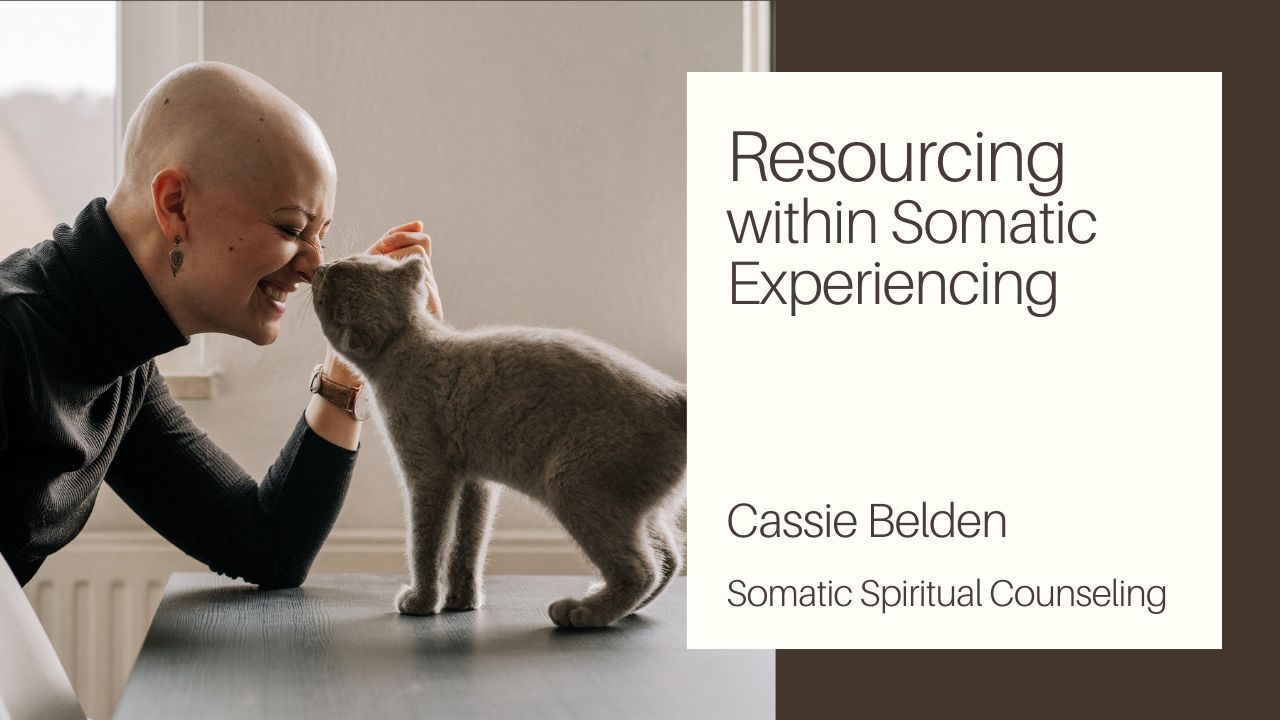Are we all wired to fight, flight, or freeze under threat? In this video, Dara del Rio talks about the fawn or tend-and-befriend response so many of us lean upon during childhood and into our adult relationships. She relates different nervous system responses to balancing the masculine and feminine principles that we all carry within ourselves.
VIDEO TRANSCRIPT
Fawning, Fitting-In, or Tend-and-Befriend Response
Hi, this is Dara del Rio with Somatic Spiritual Counseling, and today’s video is on balancing the masculine and the feminine. And I want to put this in nervous system terms for us. Often we’re presented with this narrative that when our nervous system is threatened, we respond by fighting, by fleeing, or by freezing. And we know that there’s a fourth response, which is to fawn, meaning to try and fit in socially if none of those other options work. But something I’ve noticed in a lot of my female clients is that men and women are wired slightly differently. And it’s not necessarily men versus women, but rather those of us that possess more feminine characteristics versus those of us that possess more masculine characteristics. And of course, there’s a tendency for women to be socialized as more feminine and men as more masculine, but that’s not always the case.
So, what is a more feminine response to threat? We can call it fawning. Another term I like to use is tending and befriending, because fawning kind of feels insincere, like there’s some aspect to it that’s like fake, so that we’re just fitting in with the group. But if we call it tending and befriending, this nervous system response can be both a survival mechanism, and it can be also a genuine desire to shift to create more harmony in a group. And we can see this all the time with groups of women when we’re together. There can be sort of like a group mind that comes online, or a way that we perhaps can read each other or read between the lines or telepathically communicate ideas that perhaps people around us are lost to. So, I think that’s a really interesting way of framing. Okay, this is something that happens. It might not necessarily be a bad thing. It could just be a thing. So let’s just put that on one side for now.
And then looking at masculine traits, there’s more of an urge to either fight or to flee, and then of course, to freeze in either case, if neither of those is available. So, what does this look like in social situations? This looks like more of an individual stance to things. There perhaps could be some aggression or some distancing from others as a way to protect.

Group Cohesion vs Individualism
And so, these two are really different from each other. Tending and befriending moves us towards greater degrees of group cohesion and less individuality, and fighting or fleeing leads us to more individualism and perhaps aloneness. I don’t think that one is necessarily better than the other, but I think it’s important to realize that all of our nervous systems are wired differently, and our relationship with the masculine and feminine plays into this really deeply.
The Tendency to Accommodate or Change
I can use myself as an example. I’ve been socialized and conditioned to be more feminine, and I also tend towards the feminine naturally. So, something that I’ve noticed is that there’s a real willingness in me to adapt to other people’s needs. And sometimes it can be insincere and it can trigger anxiety or stress inside of me when it’s coming from a place of lack of safety or fear. But sometimes that desire is genuine, and I have this innate capacity to change, to accommodate. And it actually feels really good and empowered to do so.
So, that’s interesting that perhaps our nervous system’s responses aren’t necessarily always a bad thing. Maybe they’re just a thing, and they can be positive or create challenges, depending on how we’re using them and what situation. So, it’s something to consider when you’re thinking about yourself, for example. What is your tendency? Are you more likely to shut down a situation, disagree with somebody, make it clear that you’re a unique, independent individual with needs? Are you more likely to isolate, or are you more likely to want to be part of a group, to ask for others’ opinions about your own choices, to seek solidarity and support in times of stress?

The Gift of Balancing Approaches
Both seem very useful in different situations. So, one of the things that I think is really important is to be able to balance these two approaches, these two nervous system responses, or we could say the masculine and the feminine. So, what if we all came into a state of balance? And perhaps that state of balance looks different for each one of us, but we’re all in relationship with our inner masculine and our need to be autonomous, independent beings, with some degree of aloneness, and our inner feminine which provokes us to be in community, in engagement, in commitment, in relationship.
So, what happens when we combine these two? Perhaps we don’t need to be all one way or all the other, but there can be more of a percentage. Maybe it’s 30/70 for you. Maybe it’s 50/50. Maybe that percentage and that dynamic between your inner masculine and feminine shifts, depending on the situation, depending on your life circumstance, or even just depending on the day or the time of year. So, this is one way we can start to think about balancing the inner masculine and the inner feminine. And I know this has been a big topic in recent years. What is the masculine? What is the feminine? How do we define them? How do we work with them? And again, I just want to clearly reiterate, I’m not talking about necessarily men and women, but rather these two polarities in nature of receptivity and action, working together to form a cohesive whole.
So, that’s a little bit about my thoughts on the inner masculine and inner feminine. And I’m curious if you have anything to share about what I’ve said. I think, in particular, I’m really interested to learn more and continue learning more about the “tend and befriend” response because I think it’s been very underemphasized in how we view nervous system responses to trauma, especially in the case of childhood PTSD or complex PTSD, any sort of traumatic event that happened over a long period of time when we were children. The “tend and befriend” response can be a really powerful and effective tool for helping us stay safe in a chronic situation that we can’t necessarily fight or flee from, and help us stay functional, so that we don’t freeze either. So, I’m curious about your thoughts, and we’d love to hear from you. You can find us at somaticspiritualcounseling.com. Look forward to hearing from you soon. Thanks for watching.
Learn more about somatic therapy here.
—————————————————————————————————————————




